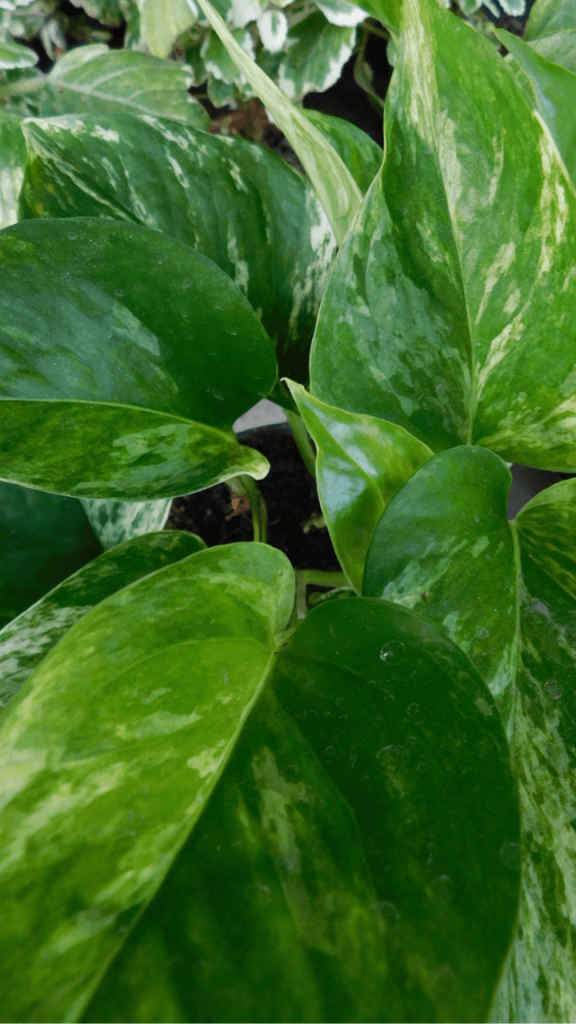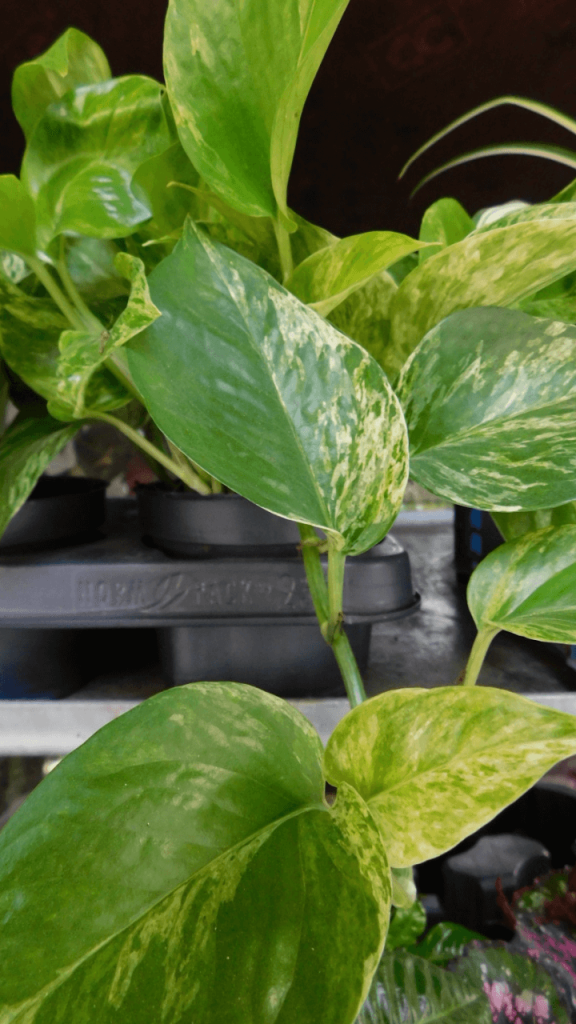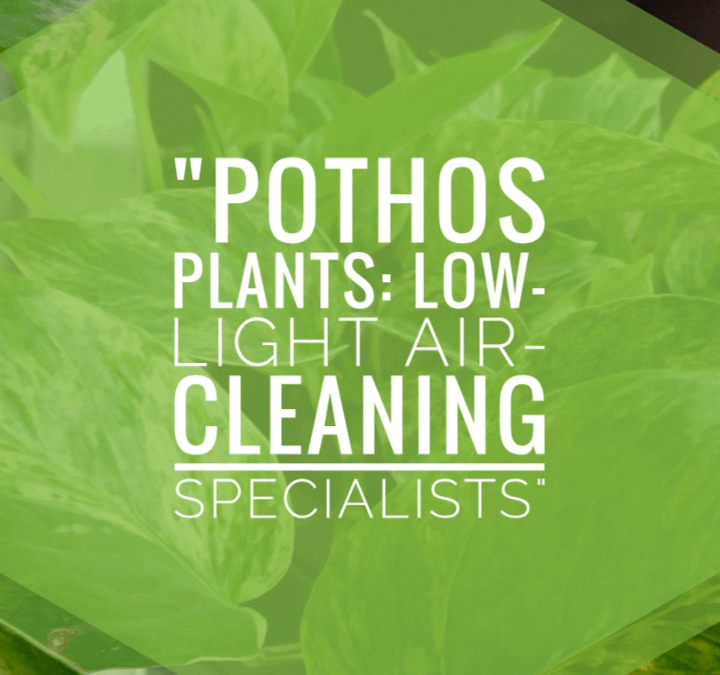Houseplants have experienced a surge in popularity in recent years, and for good reason. They enhance the visual appeal of indoor spaces and contribute to improving indoor air quality. Scientific research has revealed that indoor air can be more contaminated than outdoor air, mainly due to volatile organic compounds (VOCs) and formaldehyde emitted by common household items such as furniture, carpets, and cleaning products. As a result, many individuals are turning to Pothos Plants as a natural solution to purify the air in their homes.
Among the various plant options available, the Pothos plant stands out for its exceptional air-purifying qualities. This trailing vine plant has gained significant popularity due to its ability to thrive in low-light conditions while effectively removing harmful toxins from the air. In this blog post, we will delve into the captivating characteristics of Pothos plants and explore why they are ideal air-cleaning specialists for environments with limited natural light.
I am thrilled to highlight the Pothos plant’s unique features and its benefits to indoor spaces. Stay tuned to discover more about this remarkable plant and how it can enhance both the air quality and ambiance of low-light environments.
Overview of Pothos Plants
Pothos plants, scientifically known as Epipremnum aureum but commonly referred to as Devil’s Ivy, originate from the lush regions of Southeast Asia. I appreciate their popularity as houseplants, thanks to their low-maintenance requirements and captivating visual appeal.
Within the Pothos plant family, there are several noteworthy varieties to explore. The Golden Pothos showcases leaves adorned with a mesmerizing combination of green and yellow hues. The Marble Queen Pothos displays a delightful contrast of green and white variegation, while the Jade Pothos exhibits lush, solid green leaves.
Distinctive features of Pothos plants include their trailing vines, heart-shaped leaves, and aerial roots. These specialized roots play a vital role in the plant’s ability to absorb essential nutrients and moisture from the surrounding air, making Pothos well-suited for environments with higher humidity levels.
Apart from their remarkable air-purifying capabilities, Pothos plants are renowned for their vigorous growth and ease of propagation. With proper care, a single Pothos plant can rapidly extend its trailing vines, spanning several feet in just a year. This growth rate makes Pothos an excellent choice for individuals seeking to infuse their living spaces with vibrant greenery.
I admire the versatility and resilience of Pothos plants, and I encourage plant enthusiasts to consider incorporating them into their indoor collections. With their attractive foliage and air-purifying qualities, Pothos plants undoubtedly bring a touch of natural beauty to any home.
Benefits of Pothos Plants

Pothos plants have earned their reputation as a go-to option for individuals seeking to enhance the air quality within their homes. I appreciate the numerous benefits that Pothos plants bring to indoor environments. Let’s delve into the advantages they offer:
Air-purifying prowess: Pothos plants excel in their capacity to cleanse the air by effectively removing harmful toxins. Scientific studies have demonstrated their ability to combat pollutants such as formaldehyde, benzene, and other airborne contaminants. For individuals concerned about indoor air quality, Pothos plants prove to be an ideal choice.
Adaptability to low-light conditions: Pothos plants showcase their resilience by thriving in low-light environments, making them a fantastic option for spaces with limited access to natural sunlight. Moreover, they exhibit versatility in tolerating various temperature and humidity levels, making them well-suited for a range of indoor conditions.
Ease of care: Pothos plants are renowned for their forgiving nature and relatively low-maintenance requirements. They prefer well-draining soil and should be watered when the top inch of soil feels dry to the touch. Additionally, occasional fertilization can provide added nourishment to support their growth.
Simple propagation: The ability to propagate Pothos plants with ease is another appealing aspect of their cultivation. Stem cuttings can be effortlessly rooted in water or soil, allowing a single Pothos plant to give rise to multiple offspring. This characteristic not only enhances the cost-effectiveness but also provides plant enthusiasts the opportunity to expand their greenery collection.
All in all, Pothos plants stand out as a splendid choice for individuals seeking to elevate indoor air quality and introduce natural vibrancy to their living spaces. With their remarkable air-purifying abilities, adaptability to varying lighting conditions, ease of care, and simple propagation, Pothos plants offer an ideal combination of benefits for both novice and experienced plant enthusiasts.
How to Care for Pothos Plants
Pothos plants are a delight to care for and possess a remarkable ability to adapt to diverse growing conditions. I am delighted to provide you with some expert tips for nurturing your Pothos plant:
Light requirements: Pothos plants thrive in bright, indirect light, but they can also tolerate low-light conditions. Shield them from direct sunlight, as the intense rays can scorch their delicate leaves.
Watering needs: To ensure optimal growth, Pothos plants prefer well-draining soil. Water them when the top inch of soil feels dry to the touch, allowing the soil to slightly dry out between waterings. Overwatering can lead to root rot, so it’s important to strike a balance.
Soil and fertilizer requirements: Provide Pothos plants with a well-draining soil mixture that is enriched with organic matter. You can opt for a regular potting mix or create your own blend using a combination of peat moss, perlite, and vermiculite. Occasional fertilization with a balanced, water-soluble fertilizer can enhance their vitality.
Repotting: As Pothos plants flourish, they may outgrow their current containers. Repotting becomes necessary every 1-2 years. When it’s time to repot, choose a new pot that is slightly larger than the current one, ensuring ample space for their roots to spread. Fresh soil should accompany the transfer to support their continued growth.
In summary, Pothos plants are a low-maintenance delight, thriving in a variety of growing conditions. With your attentive care, these magnificent plants can grow several feet in length within a year, adding lush greenery and natural beauty to your home.
Propagating Pothos Plants

Pothos plants offer a delightful opportunity for propagation, allowing you to expand your greenery collection or share the joy of gardening with others. I’m pleased to provide you with expert guidance on two common methods for propagating Pothos plants:
Stem cuttings in water: One efficient method involves taking stem cuttings and rooting them in water. To begin, select a few inches long stem cutting with several attached leaves. Submerge the bottom of the stem in a glass of water, ensuring it remains immersed. To prevent bacterial growth, change the water every few days. After a few weeks, you should notice the emergence of roots from the base of the stem. Once the roots reach a few inches in length, you can transplant the cutting into soil.
Stem cuttings in soil: Alternatively, you can root stem cuttings directly in soil. Start by selecting a few inches long stem cutting with multiple leaves. Optionally, dip the cut end of the stem in rooting hormone to stimulate root development. Plant the cutting in a pot filled with moist soil, ensuring it is inserted securely. Thoroughly water the cutting and place it in a warm and humid location. Within a few weeks, you should observe the growth of roots from the base of the stem. Once the roots reach a few inches in length, you can either transfer the cutting to a larger pot or share it with friends.
In summary, propagating Pothos plants is a straightforward and fulfilling process. By following these techniques with patience and care, you can multiply your plant collection or generously gift Pothos plants to others. This cost-effective approach ensures that Pothos plants continue to bring lush greenery into your home and beyond.
Varieties of Pothos Plants
Pothos plants have captivated indoor gardening enthusiasts with their diverse array of colors and leaf shapes. I’m delighted to provide you with an expert perspective on the most common varieties of Pothos plants:
Golden Pothos: The Golden Pothos (Epipremnum aureum) stands as the most popular Pothos variety. It boasts heart-shaped leaves variegated with vibrant green and yellow tones. With the potential to reach impressive lengths of up to 8 feet, Golden Pothos is renowned for its air-purifying qualities and ease of care.
Marble Queen Pothos: The Marble Queen Pothos showcases leaves adorned with a mesmerizing marbled pattern of green and white. This variety grows at a slower pace and can pose a slightly greater challenge in terms of care compared to the Golden Pothos.
Jade Pothos: The Jade Pothos (Epipremnum aureum ‘Jade’) exhibits rich, dark green leaves and maintains a more compact form. Although it grows more slowly than the Golden Pothos, it remains relatively easy to care for.
Neon Pothos: The Neon Pothos (Epipremnum aureum ‘Neon’) features striking chartreuse-colored leaves that infuse any space with a vibrant burst of color. Its hardy nature enables it to thrive even in low-light conditions, rendering it an excellent choice for beginners.
Cebu Blue Pothos: The Cebu Blue Pothos (Epipremnum pinnatum ‘Cebu Blue’) showcases elongated leaves reminiscent of fish scales, boasting a captivating blue-green hue. Although less common, this variety is highly sought after by avid plant collectors.
In summary, Pothos plants provide a wide range of options for indoor gardening enthusiasts, each possessing its own distinctive characteristics and visual allure. Whether you gravitate towards the timeless elegance of the Golden Pothos or seek to introduce a vibrant touch with the Neon Pothos, the diverse world of Pothos plants offers a captivating choice for everyone’s preferences.
Common Issues and Solutions
Pothos plants, known for their resilience and easy care, are not immune to common issues impacting their health and appearance. One of the most frequent problems is yellowing leaves, often a sign of overwatering. Pothos prefer their soil to be slightly dry between waterings, and consistent overwatering can lead to root rot, a more serious condition that can be fatal if not addressed promptly. The solution is to allow the soil to dry out before watering again and ensuring the pot has adequate drainage. Conversely, under-watering can lead to wilting and brown, crispy leaves. If you notice these symptoms, a consistent watering schedule that keeps the soil moist but not soggy can help.
Another issue is lack of adequate light, resulting in leggy growth and sparse leaves. While Pothos can tolerate low light, they thrive in bright, indirect sunlight. Moving the plant to a brighter location or providing artificial plant lights can rejuvenate its growth. Conversely, too much direct sunlight can scorch the leaves, creating brown spots or fading the leaf color. In this case, filtering the light through curtains or moving the plant to a less intense light source can prevent further damage.
Pests, such as spider mites, mealybugs, and scale, can also infest Pothos. These pests typically appear when the air is too dry or the plant is stressed. Regularly wiping down the leaves with a damp cloth can prevent pest infestations. If pests are spotted, using neem oil or insecticidal soap can effectively control the problem. Additionally, ensuring the plant is not stressed by providing the right environmental conditions is key to keeping pests at bay.
Conclusion
Their remarkable resilience and ability to thrive in less-than-ideal lighting conditions make them an excellent choice for novice and experienced plant enthusiasts. The air-purifying qualities of Pothos add a functional aspect to their aesthetic appeal, as they work silently to improve indoor air quality by removing common pollutants like formaldehyde and xylene. However, it’s important to remember that while they contribute to a healthier living space, they don’t negate the need for proper ventilation and air quality management in homes and offices.
The ease of care associated with Pothos plants makes them particularly appealing. Their minimal water and light requirements and resistance to most pests and diseases make them a hassle-free addition to any space. However, plant owners must be aware of the basic needs and common issues these plants face, such as the risk of root rot from overwatering or leaf scorch from excessive direct sunlight.
Pothos plants are not just about functionality and ease of care; they also offer versatility in home decor. Their trailing vines and variegated leaves can add a touch of greenery to any corner, shelf, or hanging planter, bringing a sense of calm and natural beauty to the indoor environment. Their ability to adapt to various pot sizes and shapes allows for creative displays to enhance any decor style.

